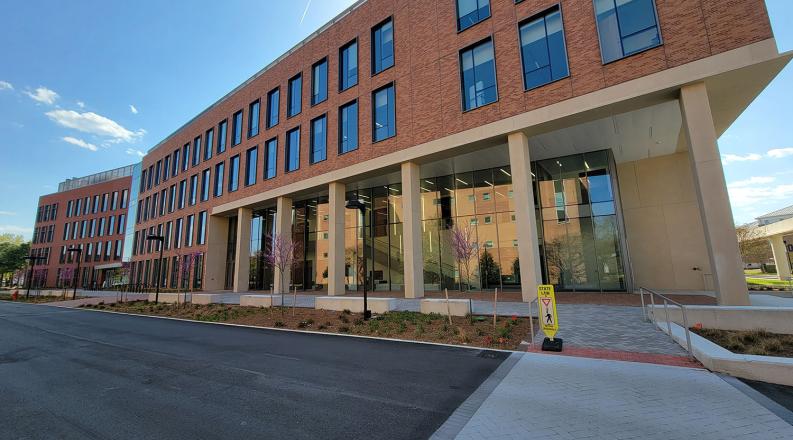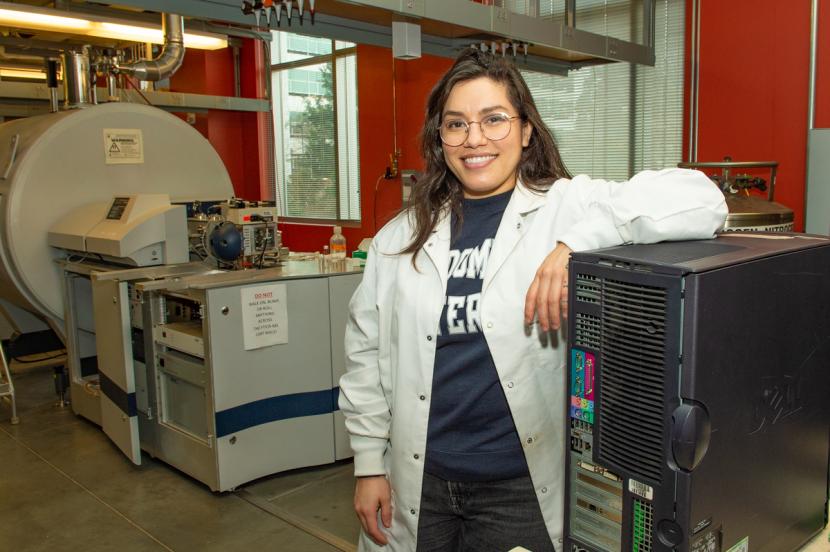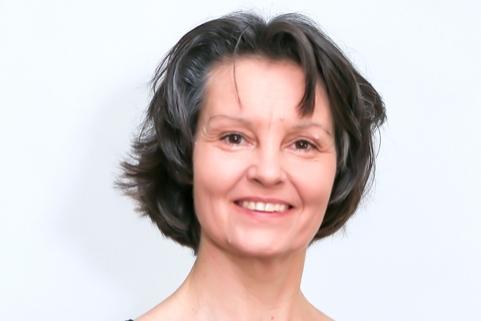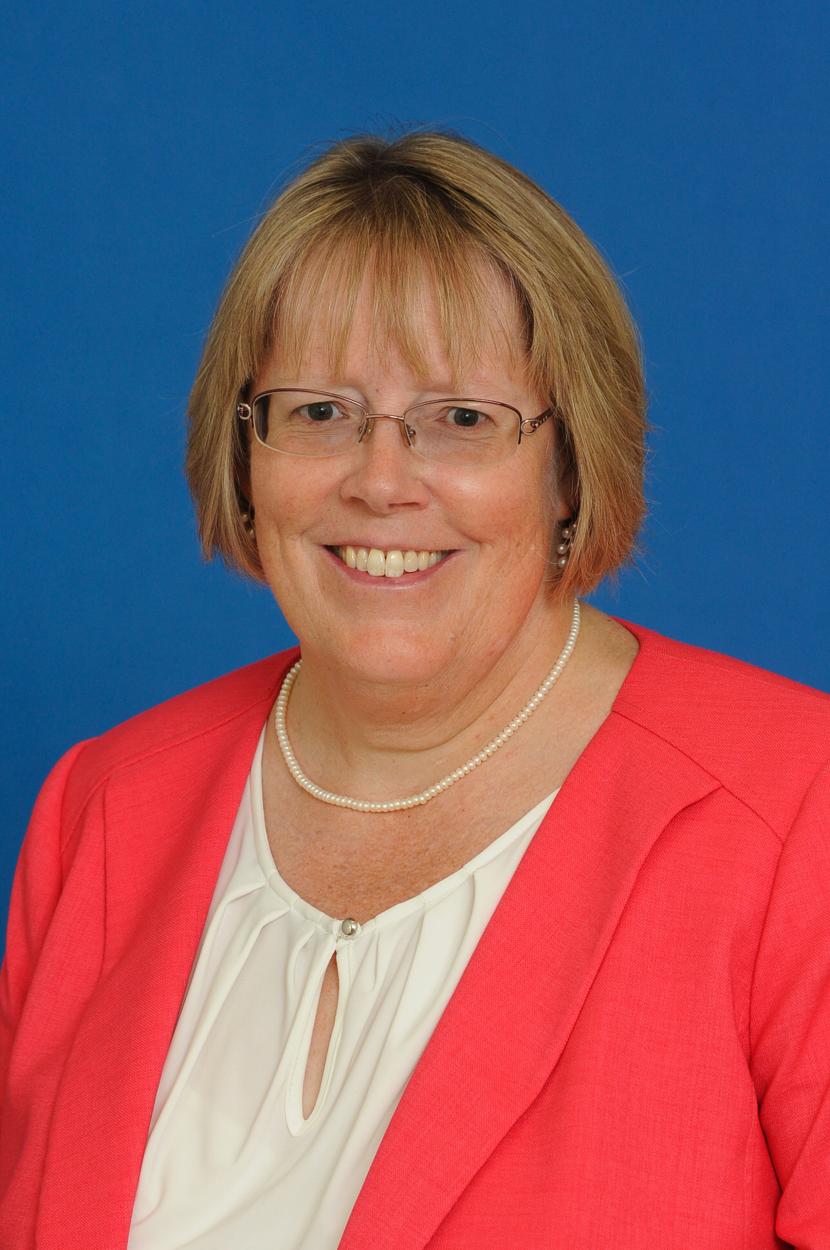By Harry Minium
Old Dominion University dedicated its new Chemistry Building, a $75.6 million, 110,000-square-foot facility Tuesday morning that will allow ODU's Chemistry and Biochemistry Department to centralize classes under one roof and faculty and students to conduct advanced research.
The Chemistry Building is part of a collective $213 million investment in STEM-H buildings that are being unveiled this week. That includes Hugo A. Owens House, which will be dedicated on Thursday, and the new Health Science Building, which is scheduled to begin construction soon and is slated to open in the summer of 2023.
The new building will enable the chemistry program to expand and offer training on cutting-edge instrumentation, something not possible in the Alfriend Chemistry Building, a 40,000-square-foot facility that opened in 1966.
The Chemistry Building will provide ODU students and faculty with 24 new research labs and 13 new teaching labs.
President John R. Broderick diligently worked with state officials to persuade them to invest in the new Chemistry Building in part to fill the growing demand statewide for high-tech jobs.
"A few years ago, we decided to invite a group of legislators and staff members to our campus," President Broderick said. "What we wanted to do instead of showing off was to show them some things that would enable us to enhance our ability to grow in those STEM-H disciplines.
"So, we showed them our chemistry labs, which we knew all along needed to be enhanced if we were going to meet the challenge of increasing our number of STEM-H graduates. We needed a building worthy of our programs, of our faculty, of our students, one that would inspire innovation and provide opportunities for all. This new facility will provide one of the best chemistry experiences to students in the commonwealth.
"The Chemistry Building meets the needs of today and tomorrow, propelling our research enterprise and allowing us to graduate a better-prepared and more diverse corps of scientists, technologists, engineers and math and health professionals to face the future head on."
Most STEM-H majors take at least a year of chemistry, and they will do so all in one building. Previously, chemistry classes were spread over 28 locations across campus.
More than 5,000 students, about 20% of ODU's undergraduates, will take classes in the new Chemistry Building, said Gail Dodge, dean of the College of Sciences.
"Among those 5,000 students are our future scientists, our future engineers, doctors, dentists and pharmacists and all of our nurses and health technicians," said John Cooper, who heads ODU's Chemistry and Biochemistry Department.
"We designed everything in this building with these students in mind to give them an experience that is unparalleled."
The Michael and Kimthanh Lê Planetarium and Digital Theater is on the first floor and will serve as a classroom for freshmen, who will have amenities few schools offer.
It is one of the finest planetariums in Virginia, a 122-seat facility with plush, reclining seats. It is larger and far more technically advanced than ODU's existing Pretlow Planetarium.
It has a $900,000, high-resolution, dual-laser system that projects images on a 49-foot dome in 4-K. The new projection system will triple the brightness, quadruple the resolution and provide 16 times as many pixels as Pretlow.
Professors will be able to project three-dimensional proteins and molecules, as well as notes and videos, on the dome, all at the same time. The planetarium can display a 3D model of the Milky Way that will show nearly one billion stars and can take onlookers on a trip through space.
The new labs are more spacious than those at many other state schools. Faculty labs, for instance, are nearly twice as big as the industry standard and were designed that way to help ODU recruit faculty.
The first floor is designated for freshmen and will provide for far more collaboration among faculty and first-year students than was previously available.
The first floor has classrooms, labs, an active learning center (with a capacity of 92 students and faculty members to meet and discuss projects) and a student success center, where tutoring from faculty and graduate students is available.
The building also features striking architecture. It is fronted by a 100-by-40-foot picture window that allows passersby to peer inside and see faculty and students at work in classrooms and labs.
The building was designed, in partnership with ODU's architects and Moseley Architects, by the SmithGroup, which also designed the National Museum for African American History in Washington.
A large gathering area, with seating for dozens of students, is visible through the picture window and surrounded by white boards for students to work on computations. Adjacent to that gathering area is an open stairway from the first to the second floor.
To the left of the stairway is a two-story glass wall disguised to appear like wood. Students can also do computations on that wall while in the common area.
The building was designed using the Collaborate Open Research Environment theory, meaning that visibility is paramount. ODU officials call it "STEM on Display."
The facility features walls with large panes of glass that allow passersby to look inside labs from hallways. Students and professors can also see work going on in other labs.
Cooper said the open design will encourage students to consider doing research. "You can't walk to class without seeing research going on," Cooper said.
"The design of the educational spaces in the new building is incredibly appealing," Dodge added.
"I believe students will be eager to spend time in the building, attending lectures, recitations and laboratories, getting help from the tutors, and studying with friends. The space has a very collaborative feel."
The interior was designed to celebrate science. Dozens of ceiling lights are molecular designs and present a futuristic look and feel. Spectral lines, the energy lines that scientists use to identify elements, were designed into many spaces, including ceiling tiles and even the brick wall facing the Bud Metheny Baseball Complex.
Quantum scientists looking at the back wall will recognize "ODU" from the line spectra for Oxygen, Dysprosium and Uranium displayed there.
Sophomores will attend class and work in labs on the second floor, with juniors on the third and seniors on the fourth. Directly across from the undergraduate laboratories on the second, third, and fourth floors are state-of-the-art research labs designed to train graduate students.
Common areas on each floor are surrounded by white boards. Although labs won't be held in the new building until the summer sessions, some white boards and glass walls were covered with formulas on Tuesday.
A meeting room on the fourth floor can hold 54 people and offers expansive views of campus, including the Bud Metheny Baseball Complex and the Norfolk harbor.
"We'll finally have room large enough for all of our faculty to gather in our facility," Cooper said.
The building is fully ADA compliant and has lab spaces with tables set to wheelchair height and valves that do not have to be gripped to be turned on.
The building is fully LEED (Leadership in Energy and Environmental Design) certified, meaning it meets the highest standards for conserving energy. Cooper said being a LEED-certified building "isn't something that's easily accomplished when you're designing a chemistry building."
Dodge said without Cooper and Tammy Subotich, a chemistry staff member, "this building would not be the showcase that it is."
Dodge said ODU's attention will soon turn to a new Biology Building, a $126 million project for which the General Assembly has approved funds to begin planning and designing.
Bruce Bradley, vice rector of the Board of Visitors, expressed his thanks to state officials, including Gov. Ralph Northam, for investing in ODU and its students.
"But mostly I want to thank our visionary leader, John Broderick," Bradley said. "I was reading some notes in preparation for this and saw where John has overseen the building of some 50-plus facilities here in his 13-year tenure.
"That's like a small city, which is really impressive. My hat is off to you for an incredible accomplishment. President Biden should hire you as his czar for infrastrucure."
Dodge called Tuesday "a wonderful day for sciences at ODU."
"I am very proud of ODU's commitment to STEM-H education and building high-quality facilities to support it," she added.






